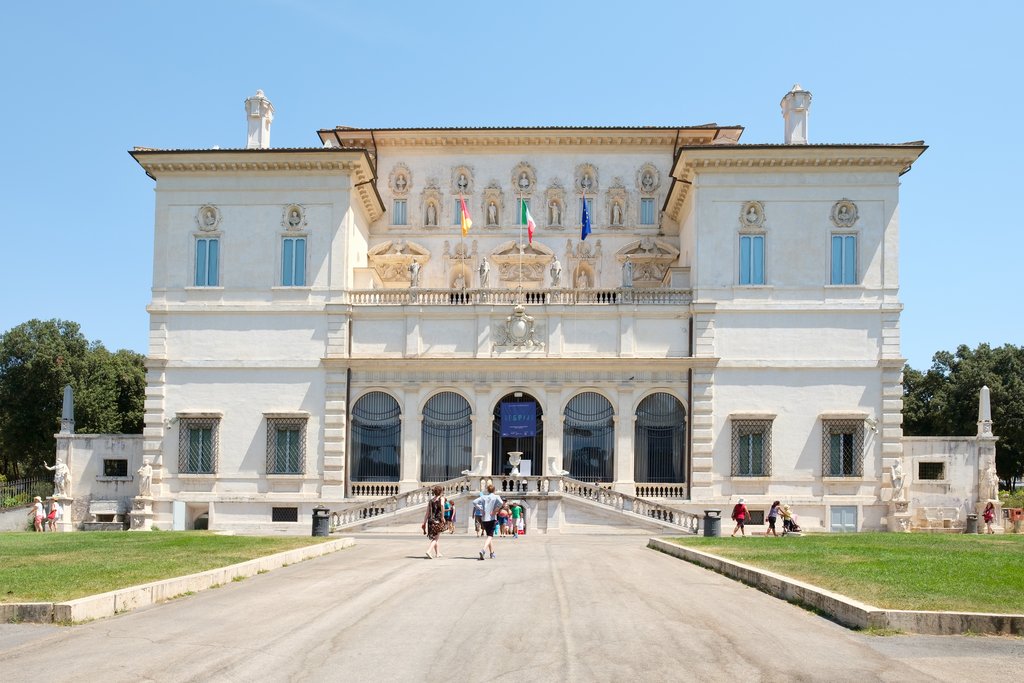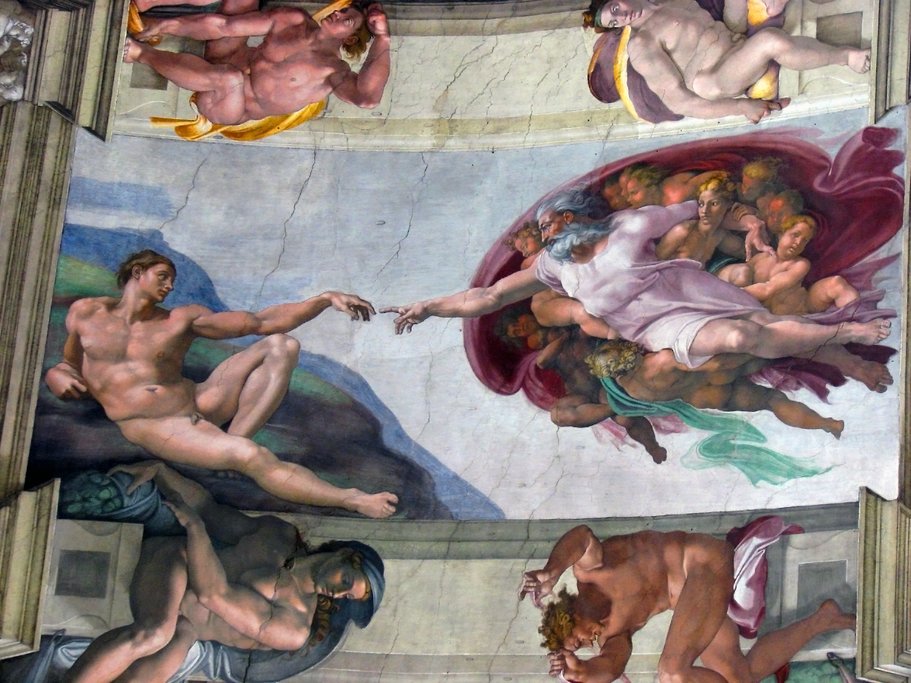Botticelli at the Uffizi, Florence

You can't help but marvel at the ethereal, luminous beauty of the large-scale Botticelli works in Florence's Uffizi Gallery, where a peerless collection of Renaissance art is showcased in a lavish 16th-century palazzo.
The gallery's Sala del Botticelli is an absolute highlight. A leading force in the early Renaissance, the Florentine painter created masterpieces such as Primavera (Spring; 1482), an allegorical painting showing Venus and the Three Graces in an orange grove, with cupid aiming his arrow at them from them above. Other standouts include Nascita di Venere (The Birth of Venus; 1486), showing the flaxen-haired goddess arriving ashore in a giant scallop shell, and the Adorazione dei Mago (Adoration of the Magi; 1475), with a whole cast of biblical figures.
See the Sala del Botticelli during this seven-day trip to Tuscany, featuring a guided visit to the Uffizi.
Leonardo da Vinci's Last Supper in Milan

Hidden on a refectory wall forming part of Milan's Basilica di Santa Maria delle Grazie, a Dominican convent and Unesco World Heritage site, is an unrivaled work of art: Leonardo da Vinci's Last Supper, which he painted between 1495 and 1498. This seminal work is one of the world's most famous murals, a colorful, dramatic and compelling portrayal of Christ and his disciples seated at the table at the moment when Christ reveals that one of them will betray him.
You can discover Milan—including da Vinci's famous mural—and the Lakes Region with this 7-day itinerary.
Michelangelo's Ceiling Frescoes at the Sistine Chapel, Rome

Nothing can prepare you for the moment you walk into the Vatican’s Sistine Chapel and feel your gaze drawn heavenwards to Michelangelo’s magnum opus ceiling fresco, a masterpiece of the High Renaissance painted between 1508 and 1512. Imagine the skill, precision and fervent imagination that went into this work of art, spread across 2624 square feet. Dancing across the ceiling are nine scenes from the Book of Genesis, the most iconic of which is God creating Adam, where a long-bearded God, carried by angels, reaches out a finger to touch a reclining Adam. Look for other frescoes, too, which depict scenes like the Great Flood and David slaying Goliath.
This can only be rivaled in scope by Michelangelo's Last Judgement on the chapel’s altar wall, finished in 1541. Here Christ passes judgment on the souls of the dead, sending them either to heaven or the demons of hell. When completed, the fresco shocked the Catholic world with its writhing nudes. Mannerist painter Daniele da Volterra was later enlisted to cover some of the figures up in the name of modesty!
Consider visiting the Sistine Chapel on this five-day Rome itinerary, which includes a private guided tour.
Chat with a local specialist who can help organize your trip.
Pinturicchio at the Cappella Baglioni, Spello

The pretty Umbrian hill town of Spello might seem an unlikely place to uncover a masterpiece, but the Cappella Baglioni at Chiesa di Santa Maria Maggiore hides one of the most highly regarded works of Renaissance painter Pinturicchio. The artist's real name was Bernardino di Betto, but he was nicknamed Pinturicchio ("little artist") because of his diminutive stature. The chapel's highly expressive and richly textured frescoes, dating to 1501, were the last important work that Pinturicchio completed in Umbria, before he left for the brighter lights of Rome and Siena.
Look out for the Annunciation on the left wall, the Adoration of the Shepherds on the central wall, and the Dispute with the Doctors on the right wall. Plan your trip to Spello with this guide to Italy's Hidden Hill Towns, which includes hotel and restaurant recs.
Caravaggio at Museo e Galleria Borghese, Rome

The ‘bad boy’ of the Italian Renaissance, Caravaggio steals the limelight at Rome’s impressive Museo e Galleria Borghese. His dramatic chiaroscuro (dark and light) technique, illuminating the subject like a spotlight, and his radical realism, taking the focus away from the heavens and bringing it back down to earth, made him a true revolutionary of his age. Caravaggio’s turbulent life is expressively captured in works of art depicting everything from brawlers to gamblers and prostitutes; a world contrasting sensory pleasures with hardship, grief and violence.
Top billing here goes to Boy with a Basket of Fruit (1593), David with the Head of Goliath (1610), the Young Sick Bacchus (1593) and Madonna and Child with St Anne (1606).
Giotto in Padua and Assisi

A lowly shepherd who taught himself to draw while watching over his flock in the mountains, Giotto di Bondone rose to prominence in the late Middle Ages. Though the artistic star of Italian Gothic age, stylistically he also took the first steps towards the Renaissance with his naturalistic approach.
You can’t fail to be moved by the fresco cycle in the Cappella degli Scrovegni in Padua, which he painted between 1303 and 1305. Widely regarded as one of the greatest of his achievements, it is an accurate and vivid portrayal of the lives of the Virgin Mary and Christ. Bookings are obligatory and should be made at least 24 hours in advance.
In the same spiritual vein, Giotto unleashed his talent on the Upper Church of the Basilica di San Francesco in Assisi, a town in Umbria, with a fresco cycle depicting the life of St Francis. Asissi is an easy add-on to this incredible cycling itinerary through Tuscany.
Learn more about what to do and see in Umbria in our comprehensive Guide to Italy's Regions.
Michelangelo's David at the Galleria dell'Accademia, Florence

The power, pride and freedom of Florence during the Renaissance are personified in the majesty of Michelangelo’s David, which literally stops everyone who visits Florence’s Galleria dell’Accademia dead in their tracks. This marble statue of a biblical hero, standing 17ft high, is without doubt one of the world’s most iconic works of art and the gallery’s biggest draw.
Michelangelo was just 26 when he took on the monumental feat of sculpting David (shown before the battle with Goliath) from a single block of Carrara marble in total secrecy. When the masterpiece was completed in 1504, it supposedly took 40 men to push it on a large wooden cart to the Piazza della Signoria, where it withstood the elements for some 400 years before being replaced by a copy.
Posing high on a pedestal, David here appears to epitomize male perfection, with his taut torso, pulsing veins and astute, watchful gaze.
A guided gallery tour, such as the one on this 11-day trip to Tuscany, lets you bypass the crowds and get more insight.
Raphael in Urbino

One of the superstars of the High Renaissance, Raphael was born and raised in the walled hill town of Urbino in Italy's Le Marche region. Its Unesco World Heritage historic center is where you'll find the 15th century Palazzo Ducale, home to the Galleria Nazionale delle Marche. Urbino was a hotbed of artistic talent in the 15th and 16th centuries, and it was here that Raphael first honed his talent for harmonious compositions, rich colors, and clarity of line. The most famous of his works here is Portrait of a Young Woman, or La Muta (1508), showing an unnamed noblewoman.
For an insight into his earlier works, factor in a visit to the Casa Raffaelo, where the great artist was born in 1483, and where his earliest fresco, Madonna with Child, hangs.
Learn more about what to do and see in Le Marche in our comprehensive Guide to Italy's Regions.
